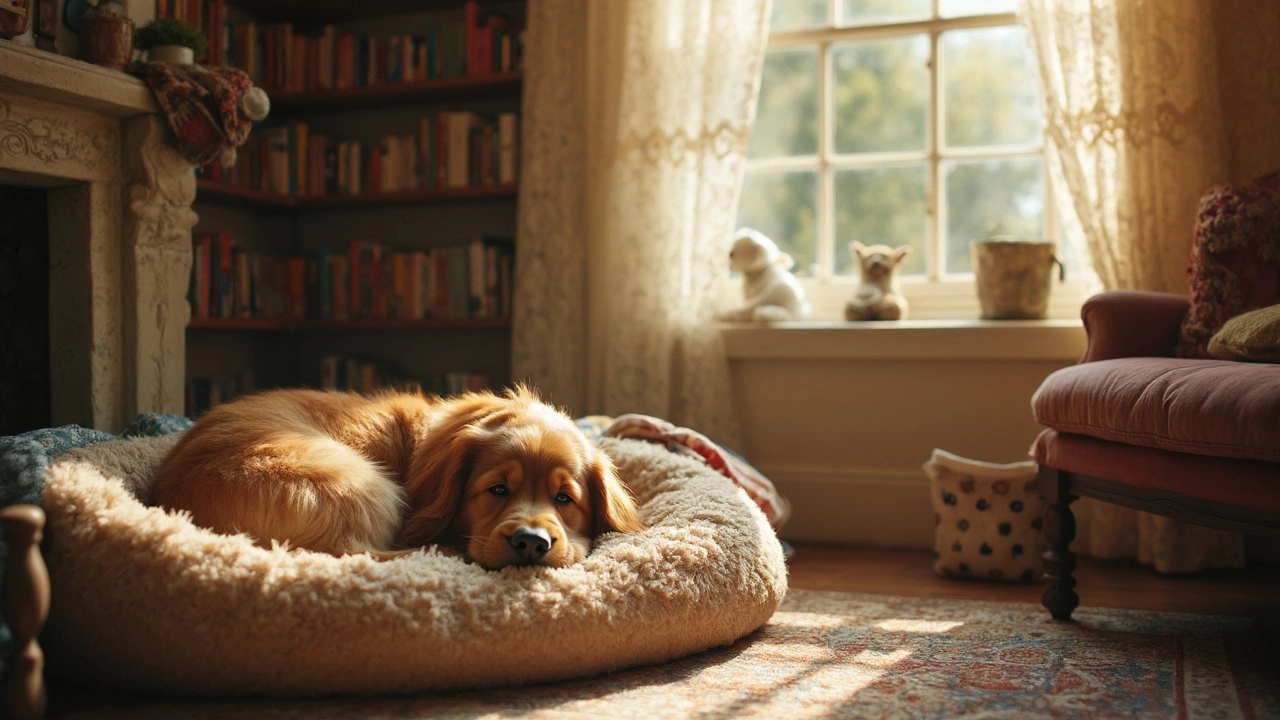Sleeping Habits for Dogs: Practical Tips & Common Myths
Ever wonder why your dog sprawls on the couch while you’re in bed? Dogs have their own sleep logic, and getting it right makes evenings smoother for both of you. Below you’ll find simple ways to spot healthy sleep patterns, fix common problems, and set up a night routine that keeps tails wagging.
Where Should Your Dog Sleep?
First, decide on a spot. Some dogs love a crate because it feels safe, others prefer a fluffy bed in the corner, and a few want to snuggle up next to you. The rule of thumb is to match the dog’s size and temperament. A crate should be just big enough for them to turn around; larger breeds feel cramped in tiny crates. If you choose a bed, pick one with washable covers and enough padding for joint support.
Co‑sleeping isn’t a myth – it works for many families – but it’s not for every dog. If your pup jumps up and hogs the covers, you may need a separate space. Observe how your dog reacts when you move the bed. If they become anxious, a cozy crate or a designated dog bed nearby can calm them without taking over your mattress.
Creating a Consistent Bedtime Routine
Dogs thrive on routine. A predictable wind‑down tells their bodies it’s time to rest. Start 30 minutes before lights out: turn off loud toys, dim the lights, and offer a short walk to release excess energy. A quick bathroom break eliminates the need for late‑night accidents.
Next, give a low‑key treat like a small spoon of plain Greek yogurt or a calming chew. This signals “good night” and can help settle nerves. Finally, place your dog in their chosen spot, say a calm “goodnight,” and keep the environment quiet. White noise machines or a fan can mask sudden sounds that might startle a light sleeper.
Watch for red flags. If your dog whines, paws at the door, or seems overly restless, check for health issues like pain, arthritis, or a urinary problem. A quick vet call can rule out medical causes before you tweak the routine.
Lastly, keep the sleeping area clean and odor‑free. A fresh bed reduces skin irritations and makes the space inviting. Swap the liner weekly and wash the cover in mild detergent to keep allergens low.
By choosing the right sleeping spot, sticking to a calm bedtime plan, and watching for signs of discomfort, you’ll help your dog get the rest they need. A well‑rested pup is a happier pup, and you’ll both enjoy more peaceful nights.
Do Dogs Prefer Sleeping Alone?
Exploring if dogs truly prefer sleeping alone or snuggle next to their owners. This article delves into the sleeping habits of our furry friends and what influences their choices. Discover intriguing facts and handy tips about creating the perfect sleeping environment for your dog. Whether you're a new pet owner or a seasoned dog lover, find out what makes for happy snoozing!
